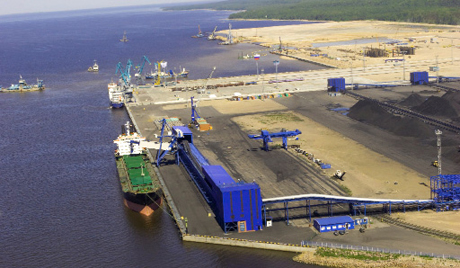26 November 2011
A summary of some recent landslide events
Posted by Dave Petley
Summary: This post provides a round-up of landslide events that have caught my eye in the last week.
This time of year is the minimum point for annual landslide occurrence worldwide, with the northern hemisphere monsoon now completely withdrawn and the rainy seasons in the southern hemisphere yet to really start. Nonetheless a few interesting events are happening around the world:
A rare example of a beneficial landslide occurred at the El Dovio mine in Colombia, where a mudslide above an adit exposed a mineralization zone that is high in gold, silver and zinc content, increasing the reserves of the mine.
Meanwhile, there is an increasing sense of sympathy for the lone tree left isolated on the displaced block on the San Pedro landslide in California:
I am not sure whether it is possible to relocate such a tree, but getting to it would be rather risky. Unfortunately, it is likely that it has a short prognosis. Meanwhile, the article from which the above image is taken has a set of galleries of the landslide that are well worth viewing.
Elsewhere the picture is less rosy. For example, Russian media report that the new Ust-Luga Baltic Sea port on the Gulf of Finland was damaged by three landslides. Given that the images of the development of the oil facilities there suggest that this port has been constructed with extensive use of fill (see the image below – from this report), if the above article is correct then this is could well be a very serious problem:
This is of course the perfect opportunity to replay the amazing Porto Cibatao landslide video from Brazil to demonstrate just how badly wrong things can go in such facilities:
http://www.youtube.com/watch?v=wS5TV5pFHOo
In Italy, heavy rainfall early in the week caused two landslide incidents. At Saponara in Sicily a mudslide killed a 10-year-old boy on Tuesday as his family fled their home. Later in the day it emerged that the same landside killed two men, a father and his adult son.
Over in Indonesia, heavy rainfall on Thursday evening triggered a landslide in Bogor that claimed two lives and left three people injured. Two of the survivors were reportedly buried for 20 minutes, which makes their survival somewhat fortunate. A similar event occurred in the Kilimanjaro area of Tanzania on the same day, reportedly killing a woman and her baby. And in China, a man was killed and two members of his family were injured in a landslide in Daning County, Shanxi Province. Earlier in the week, an 8-year-old boy was killed in a landslide in Catbalogan City in the Philippines. Three people were injured.
Finally the Nepali Times carries a detailed report on the state of the northeast state of Tapeljung, which was affected by the 25th September 2011 Sikkim earthquake. It is worth a look, not least for the images of the damage and the landslides:
The eport notes that “Two months after the earthquake, there is still devastation everywhere. Trails wiped out by massive rockfalls, schools and homes in ruins. We met families living in plastic tents provided by the Red Cross but as the winter approaches, the families fear the worst.” and “The earthquake completely destroyed 1369 houses in Taplejung displacing as many families. The official record also shows 56 school buildings, 7 police posts, 5 health posts and 9 other government buildings were damaged in the district. The locals say many destroyed school buildings including the ones that were constructed under the community supervision were of low quality and if the earthquake had struck during the school hours, lot of children would have died.”
I just hope that lessons are learnt from the severe impact of this comparatively small event, given the vulnerability of Nepal to a much larger earthquake event.





 Dave Petley is the Vice-Chancellor of the University of Hull in the United Kingdom. His blog provides commentary and analysis of landslide events occurring worldwide, including the landslides themselves, latest research, and conferences and meetings.
Dave Petley is the Vice-Chancellor of the University of Hull in the United Kingdom. His blog provides commentary and analysis of landslide events occurring worldwide, including the landslides themselves, latest research, and conferences and meetings.
Its horrible
[…] As an aside I will also draw your attention to a good NICEE presentation on the earthquake. It is a shame that we do not have good information about the earthquake impacts in Nepal. Does anyone know of a good resource covering this, other than the news report that I highlighted in November? […]